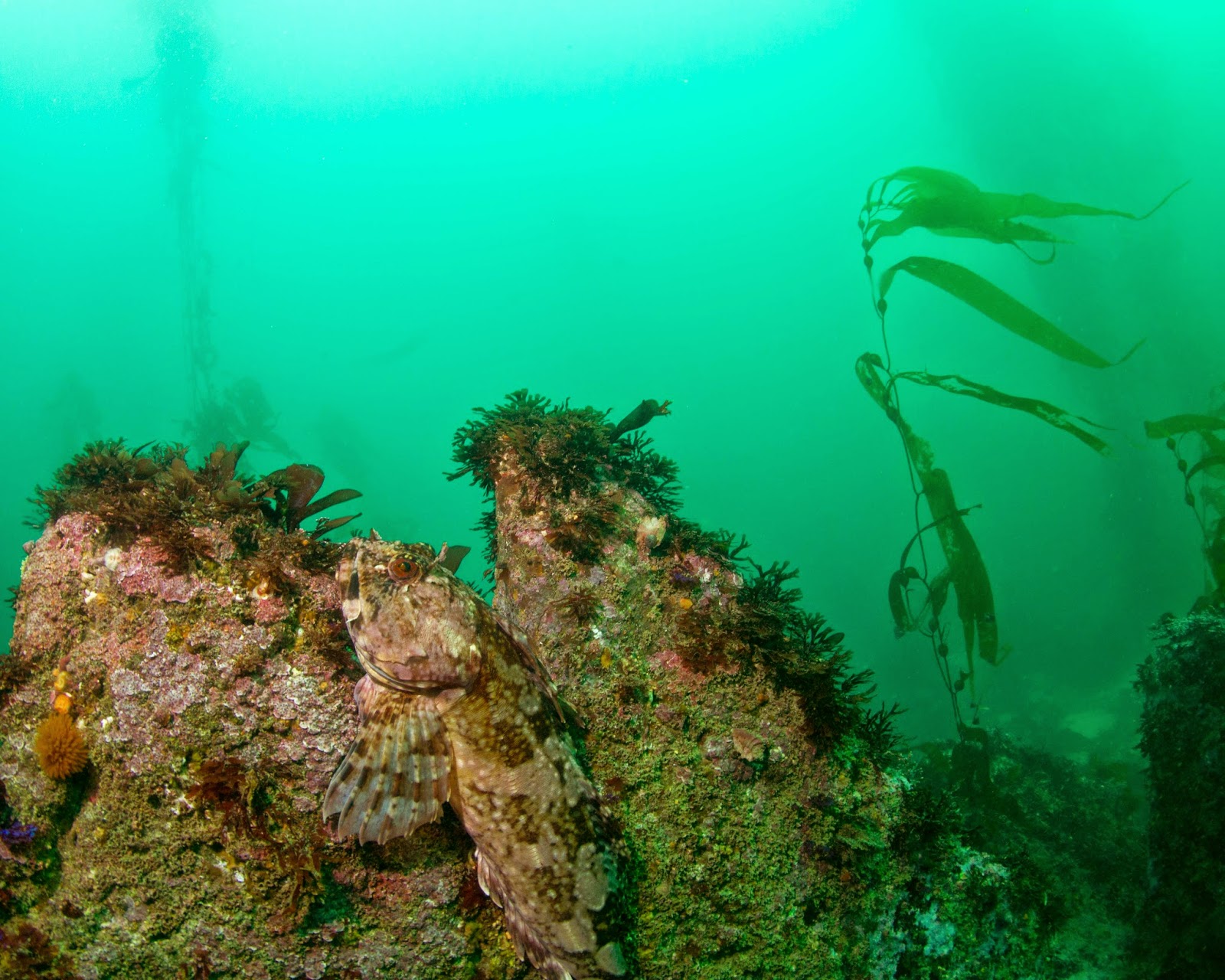Greg Hoberg and I caught a day with calm seas between many days of large swells running. Greg's outboard has been restored to health with a new "control module unit" so after some brief sea trials we cruised down to Carmel Bay to dive two of our favorite sites, Mono-lobo and Pescadero Point. We had 25 to 35 ft of visibility and 57 degree water at the top, 55 degrees at the bottom, so still much warmer than average. The kelp beds remain nearly non-existent with hordes of sea urchins in many areas. We spent a lot of time at 65 to 70 ft on the first dive so we definitely needed a safety stop before surfacing and we were quite chilled, nearly to the point of starting to lose control of our fingers....The snicker bar break was excellent before our second dive. On our cruise back to Monterey we saw humpback whales, Greg had spotted one or more Gray whales on the way down to Carmel.
Below are some pictures from the Mono-lobo dive, for more, please go to:
https://plus.google.com/photos/110159573286645489662/albums/6117433848626061905?authkey=COXO8OSTmsm2HA
Greg with a lingcod.
Greg getting a lingcod face closeup. Note sea urchins in the foreground and note lack of palm kelp..
Vermilion rockfish.
A horde of sea urchins starting the assault on the last health kelp holdfast on this rock.
Cabezon, we saw several cabezon guarding eggs on both dives.
Greg getting a shot of a male Kelp Greenling. Just as is the case with cabezons, when the female lays the eggs and the male fertilizes them, the male stays with the eggs to guard them. It is just about the only time you can get close to a still greenling to get a photo.
Greg with a school of blue rockfish.
Our second dive was on the wash rock off of Pescadero Point. Normally the wash rock is in an immense, dense, kelp bed and it is difficult to maneuver the boat into shallow enough water to anchor but now the kelp is maybe 10% of normal (with hordes of ravenous sea urchins since the sea star wasting disease devastated the sea star population) so it is easy to precisely locate the boat in relation to the dive site.
Greg is about to get a picture of a Cabezon guarding its eggs. The eggs are the dark mass on the base of the kelp holdfast just to the right of the cabezon.
There is still a stand of kelp near the Pescadero wash rock though it is much thinner than normal.
Can you see the Cabezon in the center of the picture? Frequently we don't see the cabezon until after we have inadvertently wandered to close to it.
There are fields of giant green anemones in the normally turbulent shallows around the wash rock. When you see Giant Green Anemones you know you are diving at a spot that gets transformed into a giant washing machine when a swell is running.
Lot's of hydro coral near the wash rock.
Greg getting a shot of a confident Cabezon.
For more pictures from this dive, please go to:
https://plus.google.com/photos/110159573286645489662/albums/6117434351603479537?authkey=COmbzvmgz8OU_gE














































